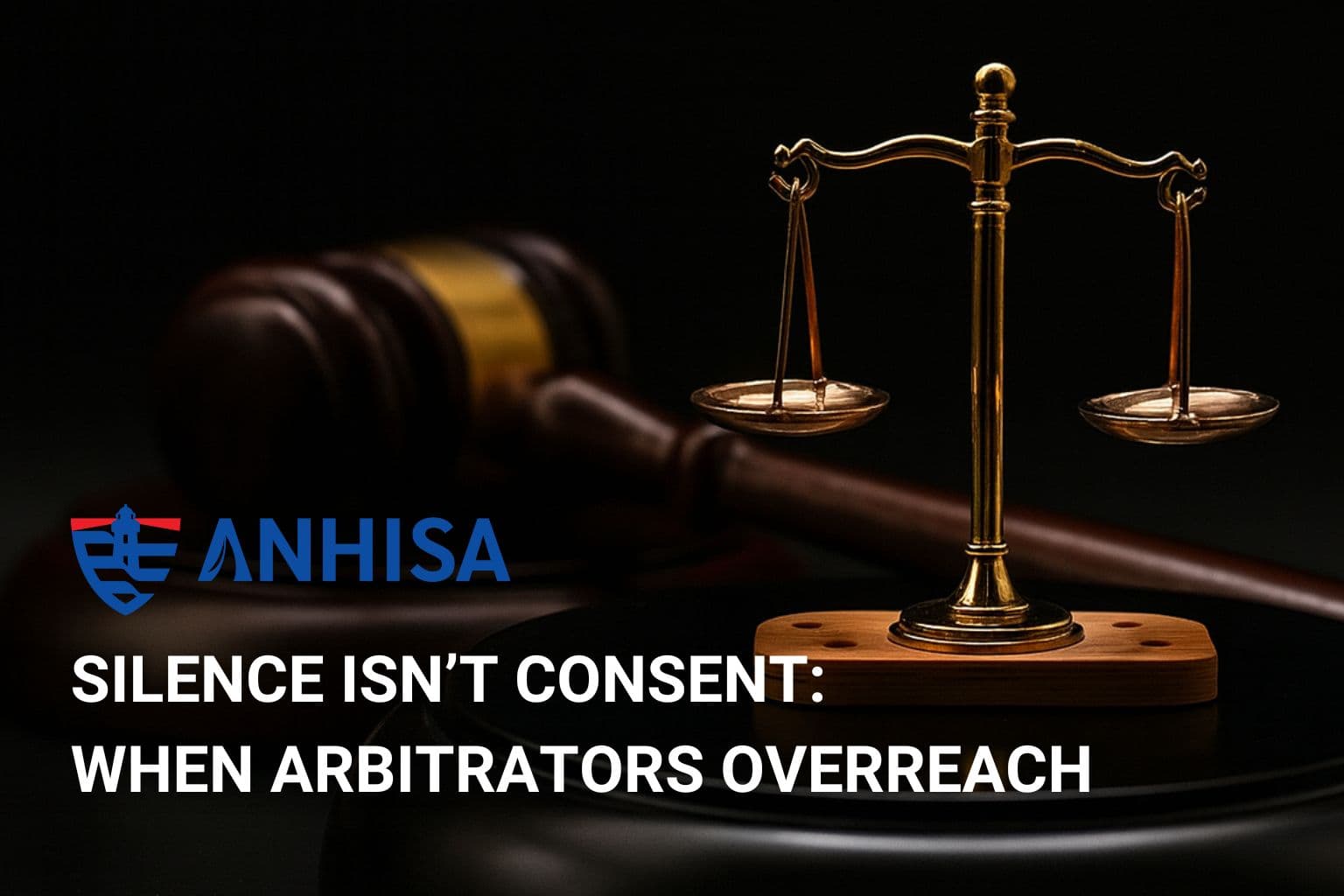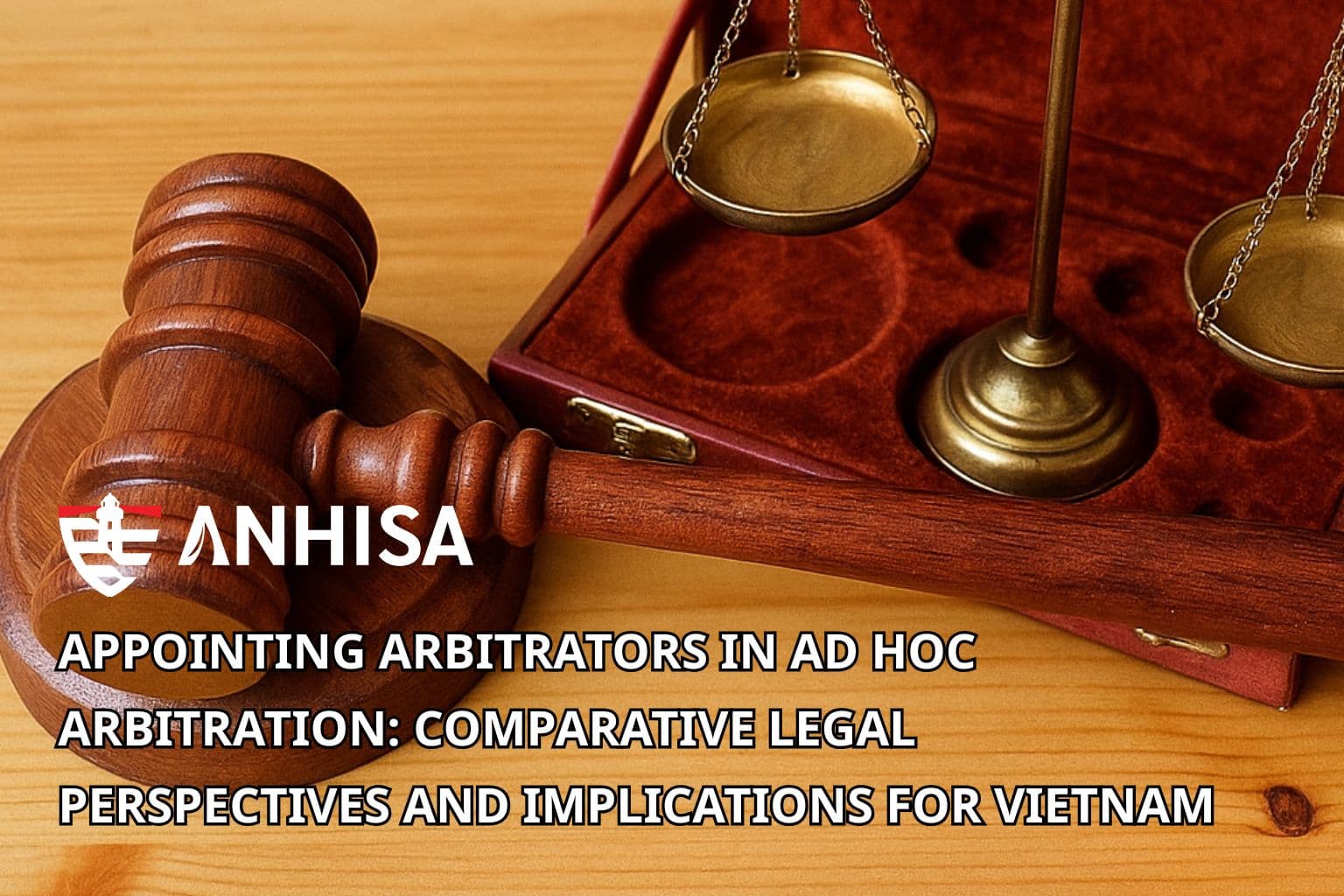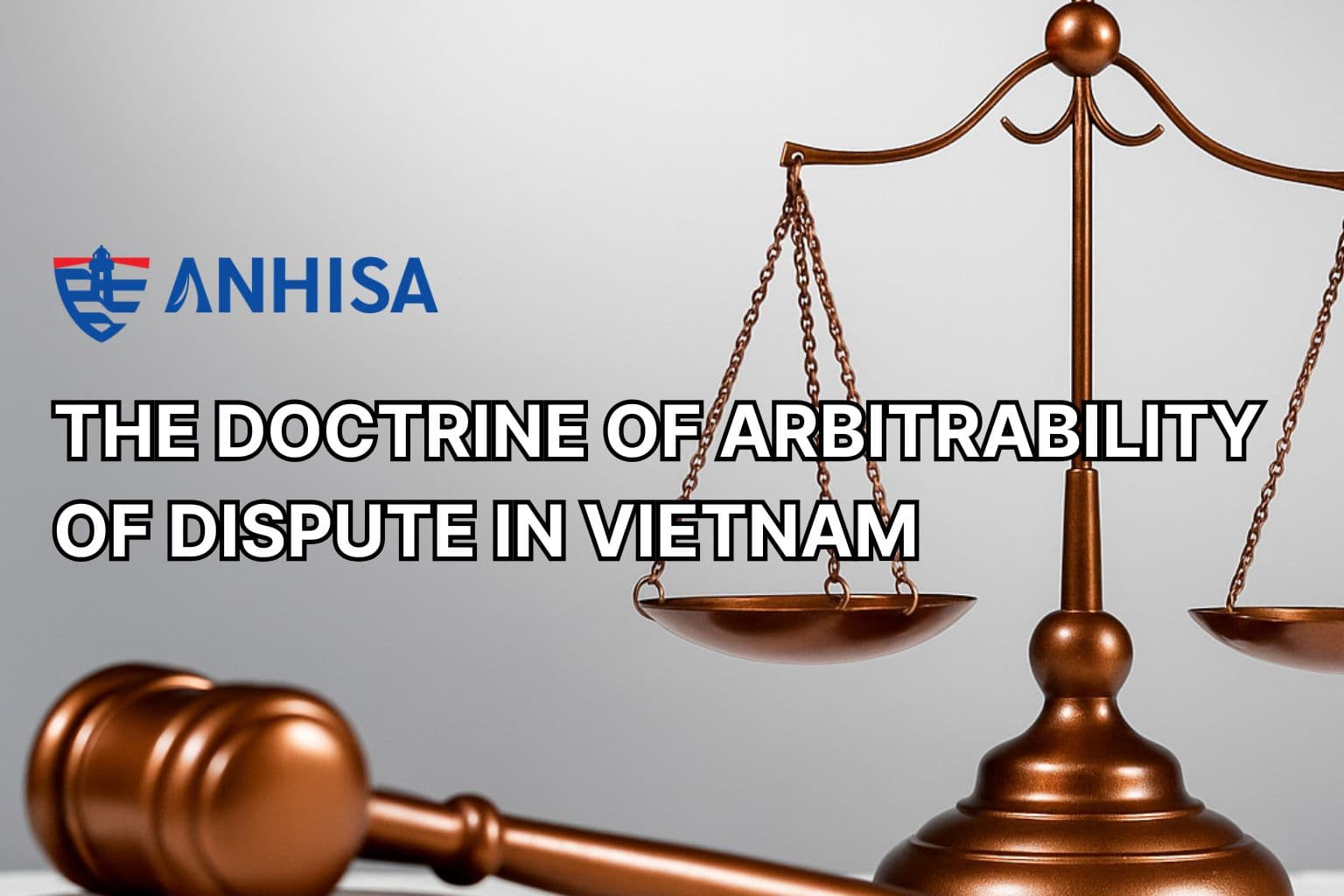[A SERIES OF ARBITRATION NOTES] Episode 4 | Validity and Interpretation of Pathological Arbitration Clauses
December 31, 2024
Foreword
ANHISA has established as a leading law firm in the field of international arbitration law. Our team of seasoned professionals combines deep expertise with practical experience to provide strategic and tailored solutions for clients. We have cultivated a reputation for clarity, precision, and effectiveness in resolving disputes via arbitration across various industries.
Pathological arbitration clauses often introduce significant uncertainty and inefficiency into the arbitration process. ANHISA’s expertise in this area allows us to anticipate and address these challenges proactively, ensuring that our clients’ legitimate rights and interests are protected. From identifying potential risks in arbitration agreements to developing robust strategies for dispute resolution, we offer comprehensive support at every stage of the process.
Based on ANHISA’s hands-on experience with both domestic and international cases, by this article, we aim to share its profound knowledge and practical experience in the interpretation and handling of pathological arbitration clauses. We would like to offer audiences a balanced perspective that is both practical and scholarly in challenges posed by defective clauses as well as strategies in drafting arbitration agreements that stand up to scrutiny.
Overview of Pathological Arbitration Clause
To ensure an arbitration agreement is valid, it is not enough for the parties to merely intend to arbitrate; their intention must also be clearly expressed. Some arbitration agreements fail to clearly convey this intention or contain flaws, for various reasons such as using cut-and-paste methods. These issues can lead to uncertainty about the agreement’s terms.
Essential functions of an arbitration agreement
Definition of “Pathological Arbitration” was first coined by Mr. Frédéric Eisemann, the former Secretary-General of the International Court of Arbitration of the International Chamber of Commerce (“ICC”). This term is widely used to describe arbitration clauses with apparent defect(s) liable to disrupt the smooth progress of the arbitration.[1]
Accordingly, Mr. Eisemann stated that the arbitration agreement had four essential functions, including:[2]
- The first requirement, applicable to all agreements, is that they must have binding effects on the parties involved;
- The second is to prevent the jurisdiction of state courts in resolving the dispute, at least until the award is issued;
- The third is to grant the arbitrators the authority to resolve all or any disputes which have arisen or may arise between the parties in respect of a defined legal relationship; and
- The fourth is to establish a process that ensures the dispute is handled efficiently and swiftly, leading to an award that can be legally enforced.
Literally, defective agreements that do not clearly state sufficiently abovementioned elements; or differences or conflicts of arbitration agreement language are called “Pathological Arbitration”.
Eisemann’s Pathology Concept
Mr. Eisemann categorizes problematic arbitration agreements into two main types:[3]
- Group A (Les clauses pathologiques au 1er degré):
This includes arbitration agreements that, although not directly contradicting the main functions of an arbitration agreement, cause practical difficulties that need to be resolved. These difficulties are related to:
- The appointment of arbitrators; and
- The procedure and choice of law.
This group covers agreements with unclear, impractical, or incomplete rules for appointing arbitrators or conducting arbitration, including those that complicate the use of ICC arbitration rules. It also includes agreements that provide excessive detail.
- Group B (Les clauses pathologiques au second degré):
This group is divided into three subcategories:
- Agreements that require a new agreement or court intervention to appoint arbitrators;
- Agreements that impose “dangerous” limits on the jurisdiction of the arbitration tribunal; and
- Agreements that are so poorly drafted that they can no longer be considered valid arbitration agreements.
Eisemann’s categories are no longer as relevant for the types of problems commonly seen in case law today. The main idea behind the concept of “pathology” is that the arbitration agreement is flawed from the start – its wording raises issues about interpretation right from the moment it is made, which can disrupt the arbitration process.

What are features of “Pathological Arbitration Clause”?
Lacking required elements in arbitration agreements, principally, potentially leads to inconsistency, uncertainty and inoperability of arbitration agreements.[4]
- Inconsistency
When there is inconsistency in an arbitration clause, national courts typically try to interpret it in a way that gives it meaning, respecting the parties’ intention to resolve disputes through arbitration.
The Courts in countries such as the UK, Singapore have generally preferred an interpretation favoring arbitration in consonance with parties’ intention to refer a matter to arbitration, unless there exists a situation where such clauses are incorrigibly ambiguous. Particularly, the courts often uphold a clause and remove the inconsistent provisions if they believe that the “remaining part of the clause” will reflect the parties’ intent and that the “removed part” – if not excluded – would undermine the goal of the agreement between the parties.
In Mangistaumunaigaz Oil Production Association v United World Trade Inc,[5] the court upheld the clause stating “arbitration, if any, by ICC Rules in London,” dismissing the claim that the phrase “if any” were inconsistent and conflicted with an unconditional commitment to arbitrate. The court determined that “if any” was either redundant and could be disregarded or shorthand for “if any dispute arises”.
- Uncertainty
Similarly, as regards uncertainty, the courts of most countries, especially countries where dispute settlement via arbitration is popular, generally try to uphold an arbitration provision.
In the Insigma Technology Co Ltd v Alstom Technology Ltd [6], Insigma and Alstom were parties to a licence agreement dated 08 December 2004, which provides the arbitration agreement as follows:
Quoted
“Any and all such disputes shall be finally resolved by arbitration before the Singapore International Arbitration Centre in accordance with the Rules of Arbitration of the International Chamber of Commerce then in effect and the proceedings shall take place in Singapore and the official language shall be English …”.
Unquoted
Articles 1(2) and 6(2) of the 2012 ICC Arbitration Rules, which were introduced following the Insigma decision, state that ICC is the only body authorized to administer arbitrations under ICC Rules. Nonetheless, although the dispute between the parties shall be administered by ICC Court, the Singapore Court of Appeal held that an arbitration clause providing that disputes should be resolved by the Singapore International Arbitration Centre (“SIAC”) applying the ICC Rules was a workable and operative “hybrid” arbitration agreement.
However, if the uncertainty is such that it is difficult to make sense of it, such defective arbitration agreements shall not be executed. For example, ICC court previously rejected a pathological clause as follows: “In the event of any unresolved dispute, the matter will be referred to the International Chamber of Commerce”.[7] Although this example references the ICC court in Paris, the clause itself does not clearly specify whether disputes that cannot be resolved will be settled through arbitration, mediation, or other procedures.
Another arbitration agreement that is considered as pathological clause states that “any and all disputes arising under the arrangement contemplated hereunder… will be referred to mutually agreed mechanisms or procedures of international arbitration, such as the rules of the London Arbitration Association”.[8] This arbitration clause simply fails for lack of certainty as it requires the future agreement of the parties on “mutually agreed mechanisms or procedures”, rather than present a certainty that parties involved has obligation to settle disputes via arbitration.

- Inoperability
The term “inoperability” is used in Article II (3) of the New York Convention 1958 and Article 8(1) of the UNCITRAL Model Law on International Commercial Arbitration 1985 (the “Model Law”).
Article II (3) of the New York Convention 1958 states that:
Quoted
“The court of a Contracting State, when seized of an action in a matter in respect of which the parties have made an agreement within the meaning of this article, shall, at the request of one of the parties, refer the parties to arbitration, unless it finds that the said agreement is null and void, inoperative or incapable of being performed.”
Unquoted
The phrase “null and void” refers specifically to the arbitration agreement itself. As explained by the principle of separability, in most countries, the invalidity of the main contract does not automatically affect the arbitration agreement’s validity. An arbitration agreement is considered “null and void” if it has no legal effect, such as in cases of mistake, coercion, or fraud.
At first glance, the terms “inoperative” and “incapable of being performed” might seem similar. However, an arbitration agreement is “inoperative” when it no longer has a legal effect. This could happen if the parties fail to comply with a specified time limit, or if they reject or imply that they have canceled the agreement through their actions.
On the other hand, “incapable of being performed” refers to situations where practical problems prevent the arbitration from happening, such as when it’s impossible to set up the arbitral tribunal. Courts usually interpret these terms strictly to prevent parties from using them as a way to avoid arbitration.
However, the inoperability of an arbitration agreement should be understood in terms of the nature of the agreement itself, rather than being linked to the inability to pay advances for arbitration costs or to settle an award. These inabilities should not be considered grounds for deeming an arbitration clause inoperative or incapable of being performed.
“Pathological Arbitration Clause” under the Vietnamese law
Under the Vietnamese law, Article 6 of Law on Commercial Arbitration 2010 mentions arbitration agreements which are incapable of being performed. This provision is guided by Article 4 of Resolution No.01/2024/NQ-HDTP issued by Council of Judges of the People’s Supreme Court.
Specifically, instead of providing a definition of defective arbitration clause or pointing out what criteria of a pathological arbitration clause, this Article 4 is limited only to specific circumstances, and only when such circumstances occur will the arbitration agreement be deemed incapable of being performed. This may lead to the lack of comprehensive guidelines when only referring to limited circumstances instead of interpreting the nature of the arbitration agreement to determine whether an arbitration agreement is pathological or defective.
For example, in various cases settled by Vietnamese courts, a party may bring a dispute to court, claiming the arbitration agreement is incapable of being performed. Due to the absence of clear guidelines, some judges have mistakenly confused other defects in the agreement (such as the lack of arbitration form or the name of the arbitration institution) that lead the arbitration agreement incapable of being performed with inoperability. As a result, they have accepted jurisdiction over the dispute, excluding the arbitration tribunal’s authority, which violates the principle in Article 6 of Law on Commercial Arbitration 2010.
Learned lessons
The handling of pathological arbitration clauses underscores the importance of clarity and careful drafting in arbitration agreements. Such clauses must clearly express the parties’ intention to arbitrate, as ambiguity or poor drafting can disrupt the process and create legal challenges. A valid arbitration agreement must be binding, exclude state court jurisdiction (at least until the award is issued), grant arbitrators’ authority to resolve disputes, and ensure efficiency and enforceability.
Pathological clauses that are vague, inconsistent, or inoperative must be addressed with caution. In customary practice, courts generally aim to uphold the intent to arbitrate, but overly vague or defective clauses may be deemed unenforceable. It is essential to distinguish between “inoperative” (e.g., missed deadlines) and “incapable of being performed” (e.g., practical issues like setting up a tribunal), as misunderstanding these terms can undermine the process.
In jurisdictions such as Vietnam, unclear guidelines on when arbitration agreements are inoperative can lead to courts misinterpreting the agreement and excluding arbitration in favor of court jurisdiction. Thus, arbitration clauses should be clear, comprehensive, and well-defined to ensure smooth and effective dispute resolution and increase the figure of recognition and enforcement of both domestic and foreign arbitral awards./.
[1] (2020) Morten Frank, “Interpretation of Pathological Arbitration Agreement: Non-existing and Inaccessible Elements”, Pepperdine Dispute Resolution Law Journal, Volume 20, Issue 3, Article 5, page 303 -204.
[2] (1991) Benjamin G.Davis, “Pathological Clauses: Fréderíc Eisemann’s Still Vital Criteria”, Arbitration Internation, Volume 7, No.4, page 365 – 366.
(1974) Frédéric Eisemann, La Clause D’arbitrage Pathologique, In COMMERCIAL ARBITRATION: ESSAYS IN MEMORIAM EUGENIO MINOLI 129, 129–30
[3] (2020) Morten Frank, “Interpretation of Pathological Arbitration Agreement: Non-existing and Inaccessible Elements”, Pepperdine Dispute Resolution Law Journal, Volume 20, Issue 3, Article 5, page 303 -204.
[4] (2015), Nigel Blackaby, Constantine Partasides, Alan Redfern, Martin Hunter, Oxford University Press, Sixth Edition.
[5] (1997) Mangistaumunaigaz Oil Production Association v United World Trade Inc, United States District Court, District of Colorado.
[6] (2009) Insigma Technology Co Ltd v Alstom Technology Ltd, Singapore’s High Court
[7] International Court of Arbitration, ICA Supplement Documents 2
[8] International Court of Arbitration, ICA Supplement Documents 2
ANHISA LLC AND OUR EXPERTISE
ANHISA LLC is a boutique law firm specializing in Dispute Resolution, Shipping and Aviation. Being the leading lawyers in various fields of law, our qualified, experienced, and supportive team of lawyers know how to best proceed with a case against or in relation to Vietnamese parties and are well equipped to provide clients with cost-effective and innovative solutions to their problems.
Regarding dispute resolution, we have represented Vietnamese and foreign clients in the resolution of disputes involving maritime, construction, commercial and civil matters. Our lawyers are well-equipped to offer services on a wide range of disputes and conflicts, whether cross-border or purely domestic, to appear before any Judges or Arbitral Tribunals. The firm is prepared to assist clients in designing the appropriate dispute resolution procedure to help resolve conflicts as efficiently and cost effectively as possible, which may involve combining elements of mediation and other methods such as arbitration.
AUTHORS
DANG VIET ANH
Managing Partner
Mobile: (+84) 983 467070
Email: anh@anhisa.com
TRUONG CONG HONG
Senior Associate
Mobile: (+84) 909 814090
Email: hong@anhisa.com
NGUYEN THI PHUONG THAO
Associate
Mobile: (+84) 919 205984
Email: thao@anhisa.com
This article aims to furnish our clients and contacts with general information on the relevant topic for reference purposes only, without creating any duty of care on the part of ANHISA. The information presented herein is not intended to serve, nor should it be considered, as a substitute for legal or other professional advice.
Related posts

SILENCE ISN’T CONSENT: WHEN ARBITRATORS OVERREACH
November 27, 2025

APPOINTING ARBITRATORS IN AD HOC ARBITRATION: COMPARATIVE LEGAL PERSPECTIVES AND IMPLICATIONS FOR VIETNAM
October 08, 2025

PARTIES TO AN ARBITRATION AGREEMENT
October 01, 2025

THE DOCTRINE OF ARBITRABILITY OF DISPUTE IN VIETNAM
September 24, 2025
- EMAIL:
- om@anhisa.com
- office@anhisa.com
- TEL:
- Hanoi Office: +84 24 320 47609
- Saigon Office: +84 28 5416 5873
- HOTLINE:
- +84 (0) 939 117 398
- +84 (0) 983 488 380

